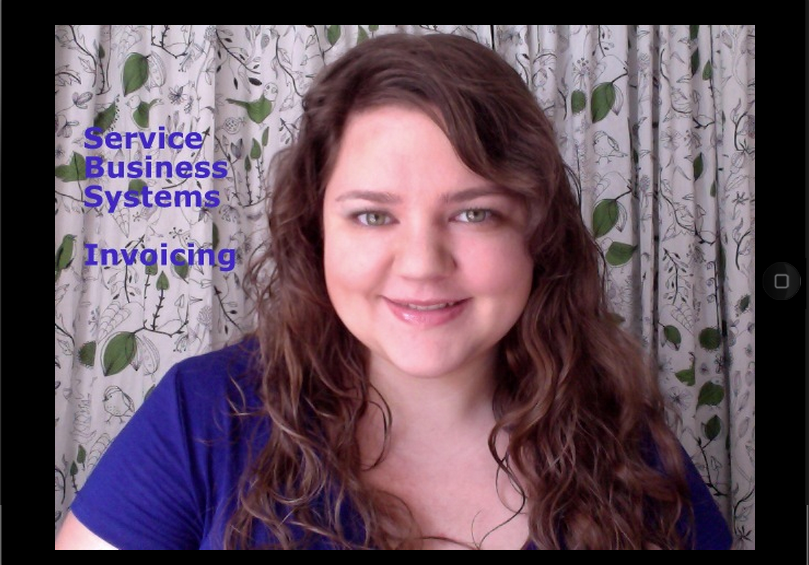Hi, I’m Kelly Azevedo, founder of She’s Got Systems, and welcome back to the series Services Business Systems.
I’m excited for this module particularly because I know how hard it is when you’re invoicing a client. You want to make sure it is accurate but at the same time there are so many minutes in the day and often, invoicing becomes a mess.
So there are two main concepts. First, as a service professional, you need to take your cues from the contract that you have in place. If you don’t have a contract, you shouldn’t be doing any work. The second thing is that when you have set hours it becomes much easier to invoice.
1. Contract: If you listen to video 3 about proposals, you know you’re going to spell out what kind of work you do and what you get paid for that. Sometimes in the contract you also want to specify how many hours you’re doing, minimum and maximum. Maybe you’re only doing up to 30 hours a week and anything beyond that you can’t invoice. It is also possible that they’re paying for a block of hours.
If they’re paying for a block of hours, you do want to track so if they’re going way under or way over that, you can adjust accordingly. The most important thing though is that you look at the proposal and look at the contract to figure out what you’ve promised so you know you’re delivering.
What if you’re not filling your hours? Sometimes you say you’re doing 30 and the work’s only taking you 20. Well, that’s great, now you can ask for more projects or negotiate for a higher rate for fewer hours (because you’re more efficient). It is possible that they’ve worked with too many people who drag their feet or didn’t do a good job that they low-balled you on the hourly, and now you can bump it up.
Even if you’re going to be paid a flat rate, I really encourage you to track your hours. There’s a lot of apps and a lot of ways to track them. I want you to pick one and just stick with it – it doesn’t matter which one, just be consistent because otherwise you’re going to be looking at 7 different places when it comes time to invoice.
Here are some suggestions for the best apps for tracking:
Excel
Pen and Paper
Freshbooks tracking
Rescue Time
LifeHacker has a great round up here, and Intuit has some additional suggestions here.
The second big thing is to follow through and make sure you set aside time. Once a week sit down and total all your hours, separate out by task if the client requires. This might take a little longer, but if you’ve been tracking it, you shouldn’t have to spend very long. Make sure you’ve got everything in place and you’re telling them exactly how you’ve spent your time and what you’ve been doing. Even if you’re invoicing monthly, I recommend to track this weekly! Otherwise, you’ll have to sit down and account for 30 days at once and that’s no fun.
2. Set your hours: The second overarching goal of invoicing is that you are your own business. As a service professional, you need boundaries around the hours you work. That means, I don’t want to hear “I answered a few emails at 11:00 at night but I was so tired I wasn’t paying attention, I think it was 15 minutes.”
You need to have boundaries in the hours you work, say 9-5 or afternoons 1-10. Whatever you set the hours and then enforce those boundaries. The easiest way to start feeling resentment is working outside your boundaries (which by the way YOU control) and instead of knowing how many hours you’ve worked, you’re guessing. So nobody wins in that situation. Whatever happens, it’s not accurate and it’s not in authenticity.
Sometimes this will mean not taking after hours phone calls, or assignments, or tasks unless it is a true emergency.
Remember, you’re not a full time employee – so you are responsible as a contractor for setting your hours. Set it in a way that serves your life. Even if you were an employee, it’s not best for you to work at 2am!
Assignment:
Write down the hours you’re actually working, what times you’re not working ,and stick to those boundaries!

 (Video) Service Business Systems : Follow up
(Video) Service Business Systems : Follow up (Video) Service Business Systems: Proposals
(Video) Service Business Systems: Proposals (Video) Service Business Systems: Lead Generation
(Video) Service Business Systems: Lead Generation